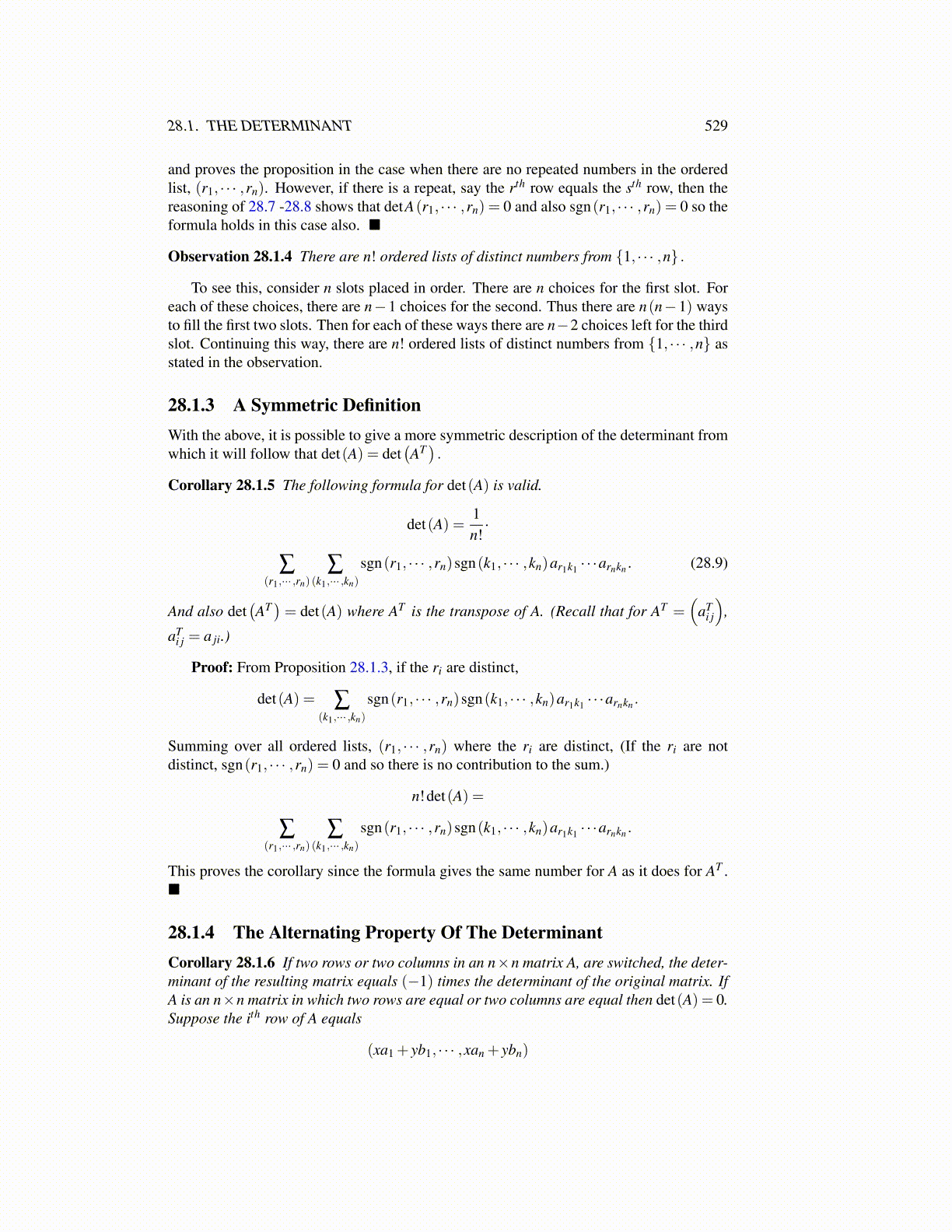
28.1. THE DETERMINANT 529
and proves the proposition in the case when there are no repeated numbers in the orderedlist, (r1, · · · ,rn). However, if there is a repeat, say the rth row equals the sth row, then thereasoning of 28.7 -28.8 shows that detA(r1, · · · ,rn) = 0 and also sgn(r1, · · · ,rn) = 0 so theformula holds in this case also. ■
Observation 28.1.4 There are n! ordered lists of distinct numbers from {1, · · · ,n} .
To see this, consider n slots placed in order. There are n choices for the first slot. Foreach of these choices, there are n−1 choices for the second. Thus there are n(n−1) waysto fill the first two slots. Then for each of these ways there are n−2 choices left for the thirdslot. Continuing this way, there are n! ordered lists of distinct numbers from {1, · · · ,n} asstated in the observation.
28.1.3 A Symmetric DefinitionWith the above, it is possible to give a more symmetric description of the determinant fromwhich it will follow that det(A) = det
(AT).
Corollary 28.1.5 The following formula for det(A) is valid.
det(A) =1n!·
∑(r1,··· ,rn)
∑(k1,··· ,kn)
sgn(r1, · · · ,rn)sgn(k1, · · · ,kn)ar1k1 · · ·arnkn . (28.9)
And also det(AT)= det(A) where AT is the transpose of A. (Recall that for AT =
(aT
i j
),
aTi j = a ji.)
Proof: From Proposition 28.1.3, if the ri are distinct,
det(A) = ∑(k1,··· ,kn)
sgn(r1, · · · ,rn)sgn(k1, · · · ,kn)ar1k1 · · ·arnkn .
Summing over all ordered lists, (r1, · · · ,rn) where the ri are distinct, (If the ri are notdistinct, sgn(r1, · · · ,rn) = 0 and so there is no contribution to the sum.)
n!det(A) =
∑(r1,··· ,rn)
∑(k1,··· ,kn)
sgn(r1, · · · ,rn)sgn(k1, · · · ,kn)ar1k1 · · ·arnkn .
This proves the corollary since the formula gives the same number for A as it does for AT .■
28.1.4 The Alternating Property Of The DeterminantCorollary 28.1.6 If two rows or two columns in an n×n matrix A, are switched, the deter-minant of the resulting matrix equals (−1) times the determinant of the original matrix. IfA is an n×n matrix in which two rows are equal or two columns are equal then det(A) = 0.Suppose the ith row of A equals
(xa1 + yb1, · · · ,xan + ybn)